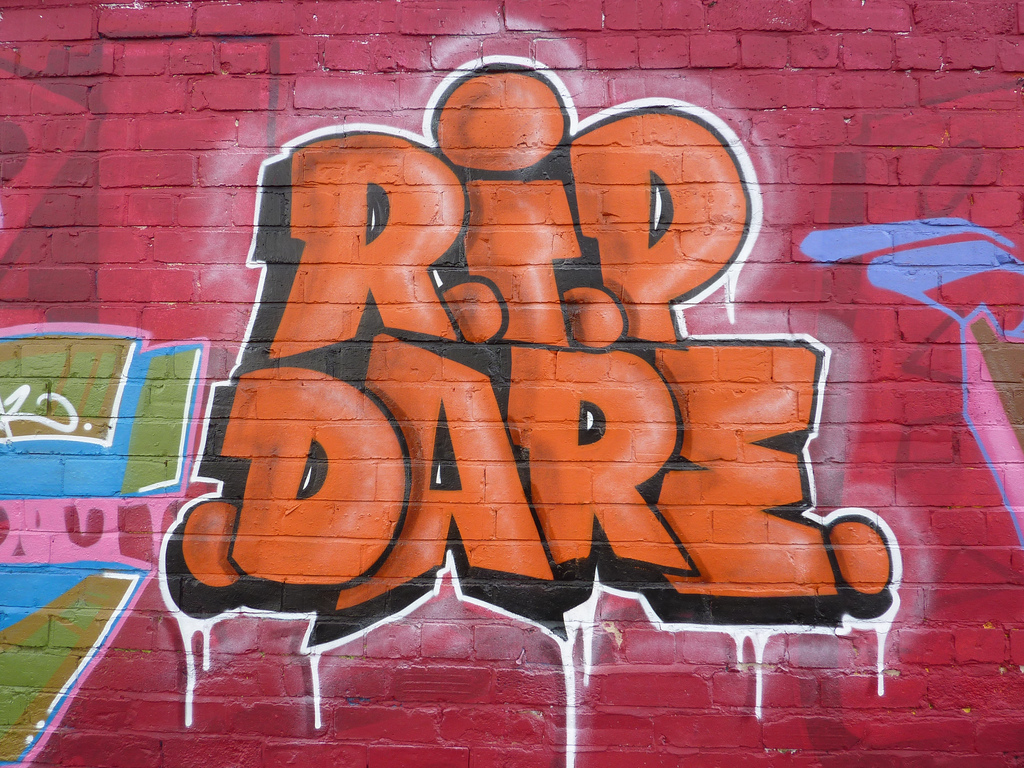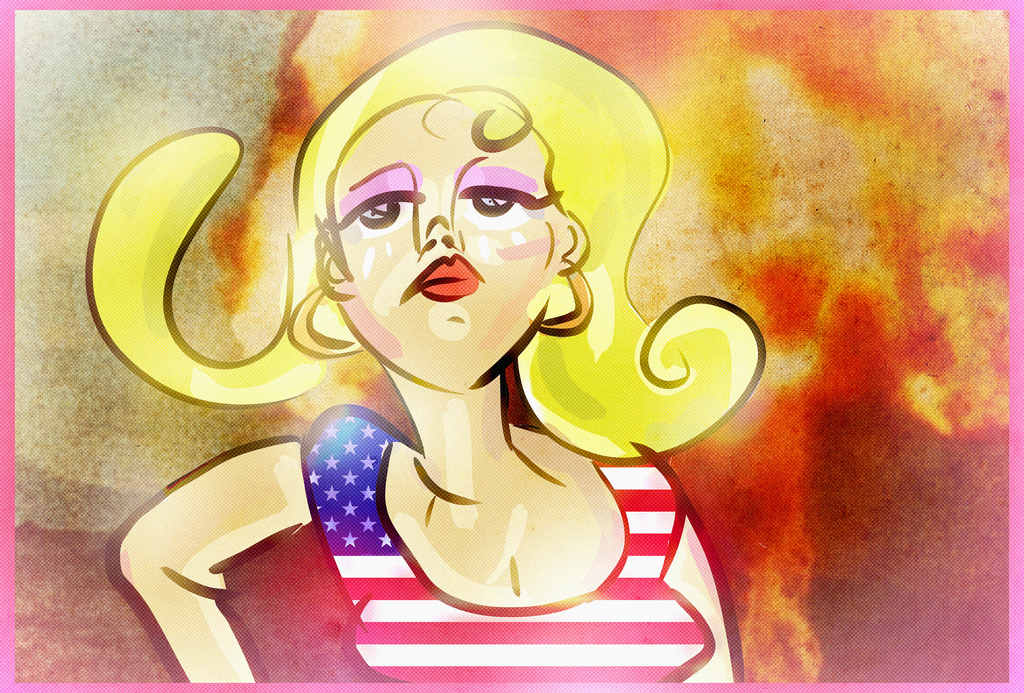|
Get your developers and marketers taking customer calls; you’ll soon stop developing anything that requires your customers to endure to pain of calling you. Seriously.
Come on, hands up, how many of us live in fear and dread of having to call any company for help? Generally speaking, it’s a fairly hideous experience. You want someone to answer, quickly, who can actually help. You would think this is simple, but generally it’s not. I came into the customer service industry through the back door, so to speak. Starting at the complaints end, I saw the rich, fertile ground for improvements. Simple improvements that often get overlooked. One radical improvement in customer service though, in my opinion, is to get rid of your call centre. Call centres are an amazing hive of industry all of their own, likely devastating to your brand and bottom line (despite the often heroic efforts of those working in them). We’ve made a science out of something that simply shouldn’t be. Let’s step back. You are the provider of a product or service. You want your customers to buy what you offer, remain loyal and recommend you to others. So brand is important, feedback is important and continual improvement is important. Here’s the thing. Call centres as a rule tend to remove the customer from your business and cost you a phenomenal amount of unnecessary money. In larger companies we’re often talking tens of millions of dollars each year in staffing alone. Then there’s the technology, any other capital investment and – most devastatingly – the damage to your brand. Think about how they came to exist. Back office staff were getting too many calls distracting them from their ‘day job’. So call centers were born; a false economy. My interest in customer experience transformation has often meant I’ve found myself in roles managing call centre contracts, or having one in my portfolio. In my last role, one of the most visionary people I’d worked with went for the big ‘call centre’ job, I was horrified. Worse, he wanted me to come and help him create a transformation. Now don’t mistake my statements here for any derision towards customer service professionals, quite the opposite. The people who work and rise in the industry are extremely dedicated, insightful, resourceful and knowledgeable. But, frankly, they are often set up to fail. For a call centre to give great service, it requires a number of things. Here’s what typically happens in organizations with a call centre ‘machine’: A call comes in from a customer – why? Because the company has failed to provide something the customer needs. So the first thing is, how do we recognize this customer? Where we all fall down in our thinking is to assume companies are like Big Brother, they know everything about you when you call. There are various forms of CRM (customer relationship management) systems that can – in theory – help companies to not only identify the customer but give a good indication as to why they are calling (begging the question, why not fix it before they call). I say, in theory, because most technology would work amazingly well if it was all the company had ever owned and all its basic operating systems were the most compatible and up to date. In reality, most companies now have so many legacy systems it takes an army of specialists to even map it all out. So, if you happen to be a customer of a company and use several of its products or services, to think the company would know our whole profile is a given, but it’s often not the case. Once you’ve got past they ‘who am I’ part, then there’s the ‘what am I calling about’ part. This is often sent with yet another silent prayer, or, depending on your experience of queuing and being identified, many expletives and a desperate hope that this actual person you are now talking to will be able to help you. To do that requires a huge amount of training in the company's products and services. Now, what do you think is often the first thing to get canned when call volumes and/ or company expenditure is too high? Good learning and development specialists, most managers, staff and customers all want employees to be excited about the brand that they work for, to be advocates outside of the workplace. In reality, very little investment gets made in this and any training becomes about how to press which buttons, with very little context about the bigger picture. Then there’s the knowledge about the detailed inner workings of the product or services themselves. “Isn’t that what training is for?” people ask. Mm, training is useful but not to learn the contents of an encyclopedia, which is what it can be like trying to understand the in’s and out’s of some products or services. This is where Knowledge Management Systems come in. A bit like CRM systems in term of their issues, with the added complexity of requiring constant upkeep and input. I’ve yet to see a fully ‘locked and loaded’ system, hence the array of post it notes and signs adoring many call centre desks. So once the inadequately trained person on the end of the phone manages to somehow find an answer to your plight, the next task is to track customer issues and make improvements to your product or service. Well, that’s what you’d think. Even companies with fabulous tracking systems (again, the same system issues arise as for CRM systems and Knowledge Management systems), generally fail to take adequate action. The reporting system, if there is one, produces statistics. Decision makers might look at the reports and say, oh, it’s only x% of revenue or our customer base, accepting certain degrees of failure in their product or service; though it can be a leap to say these things get connected to even this degree. At best there will likely be a handful of improvement specialists that tend to then fail to have a real impact in terms of systematically reducing the call/failure demand based on a lack of overall understanding and commitment of the wider leadership. It would make good sense to have a customer service representative involved all the way upstream, when you have a new concept and then start the design, or particularly when you are redesigning an existing product. This is a rarity, even if they are involved, it’s seldom with any kind of sign off - even when there’s a direct impact on call centre resources. Then of course there’s the internal politics of call centers. The typical dynamic is a mutual loathing between customer service and the developers and marketers. Imagine instead a customer service department that was looked upon as the ‘looking glass’ of success or failure of the company. Where those developing the upstream products and services regularly visited to hear first hand what customers had to say. Likewise, imagine customer service departments that live and breathe the brand and are active users and advocates of your products or services. There are companies that have programmes to encourage or enforce this, but these are often short lived due to costs. When it does happen though, it opens up a whole new perspective and, for a short time, dialogue begins. A new found respect can be seen and the customer gets considered right upstream where they should always have been anyway. So here is the point, why do you have a call centre? Take a long look at the costs here, direct and indirect. If you can look through all the points above and say, “we are doing those well”, then great, you are in the minority. If not, seriously, take a close look at this self destructive machine you’ve created and either set it up for success, or get rid of it and send those calls upstream. Dare you. This article was originally published in LinkedIn. photo credit: <a href="http://www.flickr.com/photos/10295270@N05/4500117446">R.I.P Dare</a> via <a href="http://photopin.com">photopin</a> <a href="https://creativecommons.org/licenses/by/2.0/">(license)</a>
0 Comments
We are becoming lonelier, and it’s killing us. This is the basic premise of an article I was sent this week, supported with lots of facts and figures, and sited social isolation as the key driver. I have a slightly different take on it, that is, people have become something they are not in order to fit into a culture that is not even serving us anymore. People have become disconnected from who they really are and who they were born to be. If you are not connected with your own inner self, how can you truly connect with the world around you?
As a child of the 70’s, I was intrigued by a recent Australian drama series called Puberty Blues. Its focus around the lives of young teens really took me back to that time when we emerge into the world forever changed by our hormones. The show is fairly gritty and depicts the young men as arrogant louts who need to maintain an image of cool by ‘dissing’ the chicks. And the girls of course generally abide by this etiquette of the time and get themselves into all sorts of hot water because they really felt they couldn’t say no to the guys. What really struck me about this series was an interview I read in a magazine with the young actors who were asked whether the lives they were acting out bore any resemblance to their own. Their answers were heartening, the guys were blown away by how macho and stand offish the young men they play are, the guys of today being much more comfortable with being more tactile around their mates and talking about their feelings. The girls talked about the young women of today being much more comfortable dictating their own terms. I was listening to an Abraham Hicks talk recently where I heard wise words that really resonated with this. The essence was that we get wrapped up in trying to impart our wisdom to the younger generations, when in actual fact they are born wiser. Knowledge is accumulative in the greater consciousness, our experiences and lessons are woven into the very fabric of life itself and slowly but surely we evolve. Things change, probably over about four generations, pretty quick really. Technology aside, when I think back to where we were only a few decades ago when I was growing up: Americans was locked in the Cold War with Russia, in Europe we still had a wall around East Germany, South Africa still had a system of Apartheid, being gay was not something anyone (not even a celebrity) admitted to – ever, people still debated whether smoking was bad for your health; and the role of men and women was changing. Allan and Barbara Pease have written much on the topic of the male/female differences (I like Why Men Don’t Listen and Women Can’t Read Maps), and I always thank them for introducing the idea to me that all men and women have a degree of typically masculine versus typically feminine traits. Most of my generation in Scotland were the product of homes where the mum was a housewife and the dad worked, yet we were being educated that woman had equal rights and many are now out there trying to be superheroes, with the generations following looking at the stressed, burnt out versions of their parents and deciding that is not who they want to be. Good. Being born a woman in this life has been an interesting experience. For all talk of ‘equal rights’, what we saw in the home was not that. We had no template for what it even meant. This is evident in our corporate cultures today. Even in companies that espouse attractive values, generally the reality is still a construct that fits and plays upon our more masculine traits (particularly in the way decision making takes place) with little time invested in two-way communication and the growth of our people and culture. I’ve worked closely with senior managers and ‘leaders’ in Executive positions for the last 15 years, I’ve seen women become more masculine time and again in a bid to be successful in the workplace. One was determined not to become like that because of a female boss she’d worked for who was publicly renowned for being masculine in her manner. Yet I'd observe her in meetings with her mannerisms and speech all but saying ‘watch me as I sit here and scratch my imaginary balls as I show you who the alpha dog is’. On the flip side, she’d often talk of her young teenage kids, texting or taking calls from them, and we’d see a more feminine side – but where had that woman gone in her workplace dealings? It’s an interesting world alright. The point I keep coming back to is this, we were all born with characteristics, traits and talents that – for one reason or another – we have felt the need to cover up or change in order to survive. This does not make for a happy life. We have organizations filled with people who feel like they are one person on the inside and another to the outside world, turning up each day to a prescribed job description, managed by performance reviews whose outcome must fit a bell curve. Imagine organizations filled with people who are in tune with themselves, bought in to the vision of the organization and allowed to simply let their strengths and passions flow. How do we get from here to there? We have made some enormous strides in our society, and we evolve – eventually. One person at a time, one decision at a time. So how miserable do you need to be? How lonely? What’s it going to take for you to come out and be who you are? What will it take for you to choose happy? This article was originally published on LinkedIn. As Peter Marshall, a chaplain, said in 1947 “'... if we don't stand for something, we shall fall for anything”. When this question is asked, the most prevalent answer I hear is “family”. I think for most of us family is certainly important, and we value it highly, but what would we say if our own family was asking us that question, what else do you stand for?
Earlier in my career all the senior managers in the company were sent on a leadership development course. In small groups we met for a couple of days at a time over a 6 month period. I remember feeling uncomfortable initially. The people around us can seem so different; we think they don’t understand us, and - for the most part - they don’t. That’s because we never really talk to them about what is truly important. Instead, we make judgments about people based on what we see and hear, yet this is simply the tip of the iceberg. The visual analogy of us as icebergs, which I learned from the course, really stuck with me. We can observe the behaviours of another person (the tip of the iceberg that pops its head up above the ocean), but the beliefs, values and needs of that person are unseen (the much greater part of the iceberg below sea level). With that wonderful, cursed, mind of ours we start to weave stories about other people’s behavior, usually based on our own beliefs, values and needs. This leads to misunderstandings, because we really can’t fully understand another person’s experience and what’s driving their behavior without asking them. Even then, people often struggle to put words to what lies beneath the surface. When I was interviewing for a Training Manager last year, she introduced the concept of ‘Lego Serious Play’ . Throwing a huge pile of blocks on the table, she asked us to take a minute and build a representation of what was important to us, in whatever way we wanted to, from the blocks available. I instinctively grabbed the few pink blocks that there were and started to make the shape of a heart. My colleague set about his creation, and thankfully (since neither of us were exactly ‘master builders’) we were given a few moments to explain what we’d built. On the face of it, he and I had very little in common. This exercise, though, got to the heart of what was important to each of us in a matter of minutes; and cleverly gave our prospective employee some good insight into her new employer. Both of us had built very different looking creations, but both represented the importance we placed on people above all else, and bringing people on the journey with us. It’s often easier to use this kind of abstract approach, or even pictures or songs, as a way of describing some of the things that have deeper significance for us. Just this week I sat down with my daughter, who is not enjoying her current day care situation, and we put together a ‘dream book’ of all the things that are important to her. We chose pictures that ultimately say she loves a good balance of being social and having her own space. I tell her it’s important that she holds on to what she wants (more space), that it can sometimes take a while, but she’ll get it. The more authentic we are being, the more in tune with ourselves we are, and the world around us. Too often we are in situations where what we really value and believe is hidden – or forbidden, or just not seen as socially or culturally acceptable. Sometimes knowing what’s important comes out of knowing what doesn’t feel right or fit. In the middle of selling our house right now, I had a lightbulb moment while looking at the sales blurb. The agent first described our house with the usual glossy pitch, we had beautiful pictures taken and the house was marketed on the front page of the property press. As people started to look through, we got feedback that the décor is tired. True, it is. Not being a real estate agent myself, I had pretty much left them to the initial marketing. But what I came to realise was this approach doesn’t fit with who I am, nor what the house is. It needed to be more authentic, transparent. So I rewrote the blurb, describing the house exactly as I see it, with “perfect flow and function” and included a very transparent “the opportunity to update the décor and carpeting is easy pickings for those looking to add value”. It’s important that we stand for who we are through our everyday dealings and interactions. If you feel the place you work every day, or the people you hire to provide you a service, or the people you spend time with, aren’t a match, maybe it’s time to move on. Easier said than done, I know, but you at least start the thought process – maybe even put a dream book together. The sooner you bring to light what you stand for, the sooner you can stand in the shoes of someone in the process of becoming much more in tune with themselves, much happier in their relationships, work and life. So what’s stopping you? This article was originally published at LinkedIn. photo credit: <a href="http://www.flickr.com/photos/8070463@N03/9172311242">Bouba, Madiba's father</a> via <a href="http://photopin.com">photopin</a> <a href="https://creativecommons.org/licenses/by-nd/2.0/">(license)</a> In search of deeper meaning in our lives, we often look outwards and forget our true answers lie within. By 22 most of us have formed a view of who we are and what we are about. Although by this point much of ‘nurture’ has smothered out our true nature, and the picture we have – at best – looks a little blurry, if not totally obscured.
The great news is that, at any point in time (yes, even right now), you can make the decision to be who you were born to be . When I saw the #IfIWere22 series on LinkedIn Pulse I was excited by the prospect of exploring the question as part of the journey to uncovering the real you. Looking at your younger self through the lens of time can provide some wonderful clues to what lies beneath. For me, 22 was probably the start of the journey I’m still on, though I didn’t know it at the time. I’d finished my postgraduate diploma the year before and had finally secured that first ‘proper’ job as a Training Assistant at a university in Scotland. On my first day in that job I ended up in the emergency room of the local hospital, hooked up to an ECG machine. Embarrassingly, I’d had a full blown panic attack. This was said in such a way that I had no idea it was an actual condition. I thought the nurses were just fobbing me off, just as my doctor had been doing in the months before. I’d gone to see my doctor complaining of chest pains and, after a few courses of antibiotics for what he’d diagnosed as a chest infection, he’d started treating me as a hypochondriac. Now, in all my life I’d had very few health issues. As a teenager, I’d been a competitive swimmer and at my peak physically. To be told there was nothing wrong, when your heart is pounding out of your chest, your head feels like it literally has a vice grip on it, your vision goes and you just want to throw up, leads to all sorts of worries that creep into your mind. Especially as, in between these attacks, I had lost all my energy and had started to become almost completely housebound. Thankfully this was 1994 and the internet was not yet at our fingertips, but I did know enough to freak out that I might be suffering from anything like a tumor to a heart attack, and even Chronic Fatigue Syndrome, which was still being debated as to its legitimacy by medical professionals at that point. Finally, months later, a psychiatrist diagnosed Panic Disorder. Needless to say, I bought a book (Panic Attacks by Christine Ingham), learned about the condition and how to control what was happening. In retrospect, I have learned much from this episode in my life, most poignantly it taught me the power of the mind and its effect on our physical condition. Of course, at that point I didn’t quite realise that the view I’d formed of myself was entirely created in my mind. It had been created from years of living in a certain culture, with parents and a wider family that had their own personality traits, beliefs and values. How you think of yourself is influenced by all of this, and by friends, adversaries, teachers, kids at school, sport club members, coaches, neighbours, on and on. What I’d tell my 22 year old self is:
This article was originally published in LinkedIn. photo credit: <a href="http://www.flickr.com/photos/76284765@N00/6008333467">American Woman</a> via <a href="http://photopin.com">photopin</a> <a href="https://creativecommons.org/licenses/by/2.0/">(license)</a> Confucious said “Life is simple, but we insist on making it complicated”. This is more true today than ever in our busy, hectic lives. We are surrounded by the things we buy, from the money we earn, to go buy the things, and so on. Happiness seems in short supply, it’s become a goal instead of a way of being.
True happiness comes from the peace in simply being who you are, and allowing that in others. You came into this life with traits, talents and desires; it’s in being that person, the inner you, that you will find true joy and happiness. In previous posts I’ve written about how to discover the real you within, stripping back the unhelpful layers or beliefs we’ve adopted about ourselves and allowing the real you to emerge. In the process of doing this myself, it’s struck me time and again that simplicity in every aspect of life is so key to our wellbeing. I remember arriving in my new home in New Zealand, or Aotearoa, in August of 2006. For years I’d worked, owned property and paid bills. Here I was, cashed up, no immediate worries about generating an income, no house, no bills; simplicity. As I walked along the beach one day it struck me how liberated I felt. I could do anything, be anything. I also realised that is always true. Sure, many times you may have been in a job or a relationship where the road to happiness was a little more complicated, but it’s always achievable. You can do and be anything, any time you choose. It had been well over a year since I’d made that decision to move, but in that time I was moving towards what I wanted. Unfortunately I thought all I wanted, or needed, to be happy was to change the country I was living in. The weather had a great impact on how I felt each day and I was a 3 hour drive in any direction from a decent body of water, something I’ve always yearned to be near. I felt if I was living a similar life in a nicer place then all would be well. So there I was in a new place, feeling liberated, and life was full of possibilities. In time, there was a new relationship, a new house, a new job, and still I wasn’t happy. Then I thought it was all about having children, and then I thought I needed to change jobs, something less political. As I began to raise my beautiful children, I realised that one of the core parental beliefs I held was to allow my children to be who they are, protect them from becoming someone they are not. Finally, I decided enough was enough. It was time for me to discover who I really am. As I was walking through the neighbourhood the other day, it also occurred to me that the closer anything is to its true nature, the better it is for us. I’ve written much about this in terms of people being true to our own nature, but it really applies to everything that surrounds us – everything we touch, consume and enjoy. Having spent years trying to start a family, my partner came home one day and gave me the number of a naturopath that a client of his had recommended. I rolled my eyes and sighed, great, I just knew the recommendation would be a healthy diet and supplements. Often we are looking for the quickest, easiest option, when we should really be looking for the simplest. Yes, the naturopath did recommend a healthy diet. He talked out the gloopy nature of the complex carbohydrates I was eating and simply pointed out that no self respecting fetus was going to want to grow in that kind of environment. Not particularly scientific, though the science bit was explained, but this is what I summed it up as in my mind. So I got myself motivated and gave the diet a whirl. The basic principle was to eat food that is in it’s natural state – so definitely nothing with refined sugar or flour. Great results, that year we had our first daughter. I used to often refer to this when teaching people about change management. Most companies tend to put in a new system or process and think that will solve all their problems, ignoring the people change at huge cost. There’s nothing particularly complicated about people change, but it does require effort. Effort requires cost, investment, and that is where it falls over. The same for us as individuals. In this hectic, fast-paced world we are looking for the quickest, easiest, answers. Instant gratification. This usually results in a longer spell of misery. The degree of misery that tips you over into action will be different for each of you, and will depend on what aspect of your life it’s affecting. But when it comes to your overall happiness and wellbeing, being yourself - the person you were born to be - is always the simplest path. This article was originally published on LinkedIn. photo credit: <a href="http://www.flickr.com/photos/45823378@N07/4745425727">Mila at the beach</a> via <a href="http://photopin.com">photopin</a> <a href="https://creativecommons.org/licenses/by/2.0/">(license)</a> If you often feel disconnected or wish for more peace or meaning in your life, it’s probably a good indicator that the life you are living is not aligned with the one you – the real you – wants.
There are two versions of you. There’s the real you, the one that you get glimpses of now and again, particularly on a relaxing holiday. Then there’s the cosseted, task focused version of you that operates day to day, lost so much in your thoughts that you are disconnected from both the real you and the living breathing world around you; I’m not talking about the ‘news’ here, I’m talking about life. Take your regular route to work for example, do you pay much attention to it? For over 3 years I had the good fortune to commute into the city via ferry, a passage through the islands of the Hauraki Gulf that lead into Auckland’s Waitemata Harbour. Sounds idyllic. Yet there I was, ‘device’ in hand, responding to email after email, doing the weekly online grocery shopping in between, or buying someone’s birthday present, or making an appointment, or following up on a bill, suddenly remembering five other things I had to do and scheduling them in. Sound familiar? On the odd occasion the ferry captain would pull over so we could watch dolphins or whales and, suddenly, attention shifted, people came alive and momentarily connected as we all took our devices to the back of the boat to photograph these beautiful creatures and post how lucky we are in our various social media forums. In contrast, before I started writing today, I took a walk around the neighbourhood. I no longer commute, so I make a conscious effort to go out and get some exercise and connect with the world I’m living in. It’s a calm day, with only a very light breeze, enough to bring the scent of flowers if your senses are tuned in. It’s the kind of day that lulls you into a slower pace just to still the rustling of your clothes and hear the birds twittering and tweeting to each other, a much gentler form of social media. Before I took the walk, I had deliberately taken a short time out to still my mind using a breathing practice. If I hadn’t, the walk would probably have been more like my previous commutes because there’s always more to do than time permits. Incorporating a period where you deliberately still your mind each day is critical to finding peace and connecting with the real you. Of course, what I’m talking about here is ‘consciously’ switching off as opposed to numbing your mind through that bottle of wine, beer or any other mind altering substance. I’m not saying don’t have those, your choice, but those aren’t what I’m recommending in pursuit of lasting inner peace and happiness. At first it’s not easy to just switch out of your usual cosseted state, you need to make the conscious effort, it takes focus. Schedule it in, whatever ‘it’ means to you, any activity that allows you to consciously switch off. For me, it’s meditation, yoga or a walk; for my partner it’s a bike ride in the mountains, a swim or a spa. Whether it’s 15 minutes or an hour, just do it regularly and you will be amazed at the results that follow. For those of you a bit more scientifically minded, thanks to my osteopath, I came across the work of Dr Rick Hansen in Hardwiring Happiness this week, he has some great tips for really helping you leverage your more positive experiences, making the feelings and state of wellbeing associated with them last - and explains the neuroscience behind it all. As you practice stilling your mind regularly, you’ll notice more. You suddenly catch yourself in the midst of your usual daily whirlwind and you take a moment to notice the world around you. It might be the expression on someone’s face that you hadn’t really been watching, or the carpet in a corporate corridor, or the beauty of a tree outside. Then you notice your feelings on the inside begin to slow down, feel less frantic, less stressful. You wonder why you hadn’t prioritized regular time to still your mind long ago, how did you miss this simple step you wonder. As I was reminded today by a wise man, in regularly stilling your mind, you won’t necessarily become powerful, famous or rich, but you will feel at peace and connected to everything around you – including the real you. In this state you feel happier, your true passions come to light, your inner knowing provides the answers you’ve been seeking and, in all honesty, you’ll be a much nicer person to be around in an amazingly enriched world. This article was originally published on LinkedIn. You have a long list of goals and desires, you wish your life could be better, but... "I can't do it because..." or some version of this.
If only you were to realise that the power to dissolve your fears is a power you hold within you. It's a battle between the mind and the inner self. People tell me I’m showing great courage in sharing and following what's in my heart, they are sure I will be successful. But I believe courage is not the opposite of fear, surrender is. You only need to look at the examples in your life where you really wanted something; it might be a new home, or taking a relationship to the next step, or ending a relationship. Your mind will have had many questions, fear will have arisen. Despite that, something in you knew it was the right thing to do. You've never looked back and, of course, it all worked out. The converse is true too. You will have examples of decisions you've made where you just knew it wasn't the right thing for you, but you could rationalise in your mind why you were making that decision. Inevitably, on some level of your wellbeing, it won't have worked out so well. For years now I’ve harvested a desire to follow a more fulfilling path. If I buy into the stories my mind concocts, the "what if..." stories, yes, it takes courage. If I trust my inner voice and trust it will all work out, if I surrender to that, it will. A friend told me yesterday, when she talked of painting her deck, her bones and muscles ached but she felt fulfilled. In Who Are You Not? - Strip Away What Is Not Real we talked about signs and signals that arise from your wellbeing when you are not being authentic, or true to your own nature. You wouldn’t mistake the aching my friend described as a signal that she wasn’t in alignment with her inner self; because she was fulfilling her deeper desires of tending the home she’s lovingly created, her haven. We inherently understand fulfillment as an excellent indicator that, at our deepest level of wellbeing, we are being true to ourselves. Having been around the same old circuit so many times in my work life, waking up in the morning and then being spat out at the end of each day; empty and unfulfilled, I really know the contrast with how I want to feel. No experience is wasted, the negative ones are providing us with both an example of what we don't want and the motivation to go after what we do want. Yes, if I can rid myself of aching muscles that would be wonderful, but ultimately I ache to feel fulfilled. To feel fulfilled you simply need to be yourself. When I look at the 'achievements' in my life so far, moving to the other side of the world was a move that took a lot of focus and energy, birthing my children was much the same. Both rank among my most fulfilling achievements. The other things you see on my profile, not so much. It's not that the roles I've been doing aren't worthy roles. Those roles, filled by someone being true to their own nature, would be fulfilling. Fulfilled people are happier. more passionate people. Imagine that, a workplace filled with happy, fulfilled people. Productivity would sky rocket! Fear of the unknown is what stops us. Our wonderful, practical minds step in with the “what if..” questions, fear arises and the feeling of it stops us in our tracks. On cusp of change now, having surrendered to the deeper knowing within that I must, absolutely must, let the real me emerge, the 'what if' questions creep in when I let them. Writing a post, I momentarily fear, “who will read it? If they read it, what will they think?” Then people read it, great! But then only few comment because they in turn also fear “what will others think?” And yet, in writing this and in reading this we are all in the process of becoming more aware of who we really are. When fear arises, change gear, deliberately do something different that will make you feel good - listen to music, dance, walk, cycle, stroke the cat, whatever makes you feel good. Let go of all thought and still the mind. Only then, ask the question, am I on the right path? The answers deeper within are the true answers. You must seek those answers. Then you can be who you are, the person born with gifts, talents and traits that, if fulfilled, will bring you joy, and in turn you will bring that joy to the world. This article was originally published on LinkedIn. As you begin to understand more about who you are not, your true self will begin to emerge.
Layer by layer as we scrutinise the perceptions we hold about ourselves, and start to make a deliberate effort to shed some that are no longer useful, you are likely to feel uncomfortable or even lost for a while. At first, you will have less of a sense of self. Instead you might slowly (rather than instantly) stop attracting situations in which you’d use that old armory. Old beliefs about yourself can be difficult to shake and we might have to reason them out in many facets of our life. In emotional terms, despair turns to anger which turns to frustration and finally you have apathy. Apathy is your turning point. It’s also a vulnerable point, because you feel empty. Understand though, it is necessary for something to be emptied to allow another thing to emerge. Try to be patient and use the many signals around you, the reflections of ourselves that life presents back, to discover who you truly are. It can be confusing; the world is sending us many signals at any one time. The most important thing you can do is be aware of how your wellbeing is responding to what the world reflects in its mirror. Only you can know whether something is right for you. We live in a world of contrast. Without that contrast you wouldn’t experience the strength of feeling joy or happiness can bring without having first felt the contrasting negative emotions. There is no rush, but you might feel compelled to rush, to fill the void in you that has opened up. Shedding the layers of who you’ve become is revealing if you let it be, but it also makes us feel exposed. Realising that life is meant to be easy might be a challenge. Many of us resist the idea because we’ve been taught the exact opposite. We chalk up our negative physical, mental, emotional or spiritual experiences to the necessary 'cost' of success. Life will be full of contrasting experiences, yes, but it’s the ones that make you feel good (in all aspects of your wellbeing) that are a reflection of the real you. There is no cost you have to keep paying. If something isn't working for you, work on letting it go. Look around you for the reflections of who you are. Listening to others, or asking for their help, can sometimes be a really smart way to try and figure out your true nature under those layers. Other people, assuming they are objective, can more clearly see who we are being. Every day we interact with people in a world that can tell us so much about who we are, if we listen. Our children are a very rich source for this, though we might not always like what we hear – or see. A personal coach, or even a counselor, can be invaluable. Our life is a mirror, it reflects back to us who we are being, but you can often struggle to see the wood from the trees; particularly if you have little time or headspace. One exercise, that is quite powerful, is to write a list of all the people you admire and what you admire about them. This will give you a list of traits that live, to some extent, within yourself. A journal is another way of unwinding some of your thoughts on this. For more practical tips on the process, I really like Dr Robin Smith's Rediscover Who You Are series on Oprah.com. There are many pointers to your authentic self, listen to those, and then listen within to discern what is right for you. While discovering who you really are is a lifelong journey, I encourage you to start. A world filled with people being who they really are, is a much better world than the one we live in today, for everyone, It starts with you. This article was originally Published on LinkedIn. “Courage is what it takes to stand up and speak. Courage is also what it takes to sit down and listen.” Imagine a life where mostly every aspect of it was positive? It can be if you listen - to yourself, the inner voice that is trying to be heard.
I have this quote on a little granite plaque in my kitchen, having been drawn to it a couple of years ago. It’s credited to Churchill, though there is apparently no known connection between him and the quote. Regardless, these are wise words. Previously I’ve talked about the concept of being who you are in the sense of being the person with the traits, gifts and talents you were born with, rather than the person you’ve become (nature versus nurture) layer by layer. When you are acting from your own true nature, you’re happier, more passionate about the things you do, and great to be around – inspiring even! As we take on other people’s beliefs and perceptions – you’re loud, you’re quiet, you’re good at football, you’re no good at football, you’re destructive, you’re constructive, you’re a fighter, you’re timid, you like seafood, you don’t like seafood, you are messy, you are tidy, you are ugly, you are good looking; on and on - finding out who you are, the true you before you took on all that other stuff, takes a conscious effort. The signs that you’re acting more from nurture than nature, are pretty easy to spot, should you choose to recognize them. They appear at all levels of your wellbeing; physical, mental, emotional and spiritual. You have aches and pains, you have trouble concentrating, you crave time to do more of the things you love, and you may feel angry, or weepy, or depressed. The point is, there’s more negative than positive regardless of how it shows up. Most of us put up with that in many aspects of our lives, and it’s only when the balance tips to mainly negative that we are driven to do something about it. In So Who Are You? I mentioned there were many ways to strip off the layers that are keeping you in a negative space. First you have to recognize them for what they are. Is your wellbeing suffering? If the answer is yes, it’s a layer you’d be better shedding. This layer may have served you once, but it is now holding you back. Now you have a choice, either do something about it, or go around the circuit again, attracting more circumstances or people into your life to reinforce the negative ways you feel. This is what we do, unconsciously. This is your default future. What if you want to change that? You want to discover who that person is beneath that layer or that belief about yourself that you’ve been holding onto? Fear might hold you back. I’ve mentioned that I’ve seen myself as a fighter, a defender of perceived injustice, for most of my life. Yet, all the signs were there that I don’t actually like to fight – the knots in my tummy, the sleepless nights, the obsessive thinking through of every detail, turning it over and over in my mind. But what was the alternative? To let ‘those people’ win? ‘Those people’ could of course be anyone from my partner or my mum to a lawyer or institution. If I perceived there was injustice I’d take them on regardless, no one was going to diminish me, nor anyone I cared about. So to peel back this layer was a scary thought. Was I going to become some sucker who let everyone walk all over me? I can think of countless examples of situations I’ve faced where I’ve been proud to have ‘stood my ground’, to speak up or speak out; it’s been part of my identity, one I’ve been rewarded for in many ways. What was I going to do if those situations arose again? Did I have enough confidence I’d been drawing those situations in because I believed myself to be a fighter? And others, in turn, had seen me speak out thus were more drawn to me when in need? The short answer to this is yes. But it wasn’t a quick answer to get to, and it’s a question that still plagues me from time to time if I let my mind get in the way too much. Our mind is a wonderful tool, but we’ve let it become the thing that defines us – “I think, therefore I am” said Descartes. It can really help us successfully navigate the daily practicalities of life, but it also makes up wonderful stories that keep us in fear of ever acting in our own best interest. The ‘what if’ stories. My “what if I become a sucker” story. Yes, I could see that these situations were affecting my wellbeing. But was I attracting them? And did that mean I could reverse the trend and not attract them? My 4-year-old daughter is a master of simply paying no attention – I mean zero – to the things she doesn’t want. Try getting an answer to “would you like an apple?” if she’s not hungry, or “shall we read this book?” if she’s busy doing something more interesting. The law of attraction is a concept that has had a lot of attention in recent years, most widely in the Rhonda Byrne book The Secret. Certainly as a competitive swimmer I understood the power of the mind and the part it played in winning, but I hadn’t really thought about it in relation to other aspects of my life that tended to unfold unconsciously. I liked it, because it meant I could determine more of my own future. So was I willing to take a risk that I might get ‘walked over’, be diminished, if I shed this fighter layer of mine? Were there other ways to stand my ground without fighting? Or would I simply stop attracting challenging situations that made this necessary? The answer to my question was there, when I listened. Only you can decide if you’re ready to strip back unhelpful layers. What I’m encouraging is that you listen to your true inner voice rather than the voice of fear in your head. Your inner voice - or intuition - will help you decide if something is right for you. We all have different ways of listening to our inner voice, our true nature, but they all involve stilling our mind. For some people the way to this is through a sport or activity they enjoy, for others it’s in the day to day chores – like cooking – that require little thinking, for others it’s simply meditation. We all know our own answers when it comes to what’s best for us, the trick is to trust that inner voice more than the ‘what if’ stories your mind creates when you give it too much attention. So while I trusted that shedding this ‘fighter’ layer was in my best interest, I still needed some help to work through some past scenarios to still that ‘what if’ voice in my mind, and not just once, because under stress we default to ingrained behaviours and it takes a while to ingrain new ones. Understanding who we are not - what is a layer versus what is our true nature – is one thing, understanding what our true nature beneath is another; one I’ll expand on more next time. The principles here are simple, the reality can be a bit more tricky as I’ll continue to share. But it is worth it. A world full of happy, passionate people in positions of influence and power – that is all of us – is the surely the world we want to live in? This article was originally published on LinkedIn. Why do so few of us realize that life is meant to be simple? We come equipped with a nature, talents and gifts. We just have to grow up and use them. Therein lies the problem; in the process of ‘growing up’ we take on so much of other people’s ‘stuff’, added on layer by layer, we lose sight of who we are.
Our true self is passionate and joyful. The one with the layers added, not so much. Imagine the joy in turning up to a workplace, or being in a relationship, where people (including you) are in tune with themselves? To be who you are , your own true nature, how do you strip away the ‘nurture’ and why? Is that not part of who we are? Well, no. It’s part of the armory, or ‘layers’, we’ve developed in order to get through, get along, to even exist; beliefs we’ve adopted about ourselves. When I was heading into higher education, my mathematics teacher told me it would be a loss if I didn’t take the subject. Not wanting to let him down, I took his advice and adopted a ‘I obviously have talent for math’ layer. Bad decision. Two years into uni, on a summer break, I was working nights in a bar on a holiday island off the coast of Spain. Instead of spending my days at the beach, I was studying for the second and final resit of the math exam; and spending all the money I’d earned on a flight home to take it. Pass, or leave uni. I learned enough that summer to both pass the exam and finally drop the subject. Unfortunately though, because I’d initially been guided by my ‘talent for math’ belief I was, by then, locked into a Bachelor of Science degree. Sadly the only subjects I had taken in that first couple of years that I was actually interested in, and had sailed through, were in the Arts faculty (psychology and management studies). Luckily I then decided to go on and take a postgraduate diploma in Human Resources, much more my kind thing. If only I hadn’t minded momentarily hurting the feelings of my math teacher at the outset though. Yes, I finally learned at uni math wasn’t for me, but I then held the misguided notion that was because it involved letters (as an aside, whoever put letters and algorithms into math was surely sadistic). But the ‘I have a talent for math’ layer was strong and I held on to the idea that I was good at numbers… Finally after years of doing accounts at home and in business, and budgets at work, I recognized that the knots in my tummy, the items I wanted to hurl across the room, the people I’d been terse with, the headaches I’d borne and the imaginary screaming in my head were all fairly good indicators that I actually don’t like numbers. That was in my late 30’s. When you’ve been stuck in a layer and you finally shed it, you wonder why on earth it took you so long to realize it. The relief is amazing. To strip off the layers there’s a hard way and an easy way. The hard way is Groundhog Day – another job, another project, another relationship, another friendship, playing out the same old scenarios. When you’re in those spirals it’s hard to even distinguish what the issue is, you just know you’re not happy. It’s the proverbial not being able to see the wood from the trees. Often it’s easier to blame the scenario or another person than to figure out what, within you, is not a match. There are easier ways – with a deliberate shift to the plural here. They all start with a desire to be happier, and a decision that you will put in the focus required to make that happen. Let’s talk more about that next time. This world doesn’t need the stressed out, unhappy, grumpy version of you, it needs the one who feels good about who they are and what they do, so who are you – truly? This article was originally published on LinkedIn. About a month ago I was having lunch was a previous boss of mine, he remarked that it still baffled him how confronting it was for some people to work with a person being themselves. The more I would say what I really thought, the more it made certain people start to spin out.
He values people’s authenticity. I’m not saying he always liked it, there were times we wanted to kill each other (not literally but it was nice to have a cartoon version of it in my head on occasion), but his preference was for passionate authentic people. The line of thinking is you get a lot more discretionary effort and much better results. I agree. But it’s an interesting subject, authenticity. Wikipedia says authenticity is the degree to which one is true to one’s own personality, spirit or character, despite external pressures. Sounds great, but how many of us truly know our authentic selves? If you do, well done. But for me, it’s still an ongoing journey. For years I’ve been interested in psychology, always drawn to the multitude of personality and character tests that exist. While some basic understanding is helpful – like the revelation we aren’t all wired the same way i.e. some people prefer interaction with others while others prefer tasks, some people are introverted, others are extroverted, and (a big one) men and women are quite simply different – it can quickly get very complex from there. But I’ve come to realize that psychology is about understanding people with their nature and nurture swirled together, with ongoing life events that reinforce things we’ve come to believe about ourselves and the world. Let me give you an example. A child is born, in its early years it starts to sing. Its parents say “ooh, maybe stay away from the singing”, backed up with a few grimacing looks or laughter every time the child does its best rendition of Old MacDonald or Twinkle Twinkle. Now this child has just added a layer to their true nature, some ‘nuture’, a layer that says “I can’t sing”. Starting to recognize the layers? We’ve each got hundreds, probably thousands, of these layers. What I mean by being who you are, is to be the person under all those layers. So how do you even know who that person is? As I said, it’s a journey, one that involves being confronted by the same issues time and time again, going round the same loop. A common example of this is in relationships, we attract the same types of people time and again, the same issues in different guises. Many go through their entire life repeating the same old issues, feeling sorry for themselves. Instead, if you look at your part in these situations, and learn from them, you take away some layers and move on. The story of my relationship with one of the people my old boss referred to as being "confronted" when I was being me, provides a great example of just this. Her personal story is not relevant here, but it’s now easy for me to see I’d attracted an old scenario again. A domineering, overbearing person trying to force their opinions on me. And initially (and for a long time) I reacted as I always did, in defense. Now, I’ve always been ‘professional’, so “in defense” was of course within those boundaries - lots of ranting to the boss, drawn out ‘discussion’ and heated debate over this or that, platitudes and compromises, all of it exhausting. But I’m a fighter, especially of injustice, so it’s fair to say the pictures in my head as I was ‘professionally’ dealing with this person weren’t of a cartoon variety. Right there, there’s a ‘layer’, “ I’m a fighter”. I was so sure that being a fighter was my true nature. But how could it be? I never liked fighting, there’s a clue. But I wasn’t going to be diminished either – the true fear – not realizing until now that the true me will never come to light while it’s repressed by this fear. Funnily enough then, it turns out my true nature is not to fight, not to defend. None of it sits comfortably; it’s simply what I learned to do to survive. But now I know there’s a different choice. Now I know if you give attention to something it simply fuels more of it. So now I am learning to switch that off. Consciously at first. The driver/survivor in me is no longer required nor helpful. I don’t want to waste my communication skills in defense all the time, it’s too wearing. The outer and inner me simply weren’t a match. Are yours? So I made that decision with that person at work, and ended it by being authentic. I stopped trying to be nice or professional, in our final fight I simply said “I won’t be bullied by you or anyone”, and walked away. Then I stopped giving any energy in that direction, I knew it was done. My energies went into the more productive transformational stuff I was there to do. This earth needs more people being who they are, rather than who they’ve become. Certainly the corporate world needs it, politics needs it, and the government needs it. Be who you are, you’ll be better for it and so will we. This article was originally published on LinkedIn. |
This is a two-step sign-up process, you will have to verify your subscription by clicking the link in the email you should receive after clicking this 'Subscribe' button. If you do not receive the email please check your Junk mail.
By signing up you will only receive emails from shonakeachie.com related to Shona's Blog and you can unsubscribe at any time, thank you. Please note if you are using the Google Chrome browser and want to subscribe to the RSS Feed you will first need to get an RSS plugin from the Chrome Store.
|











 RSS Feed
RSS Feed